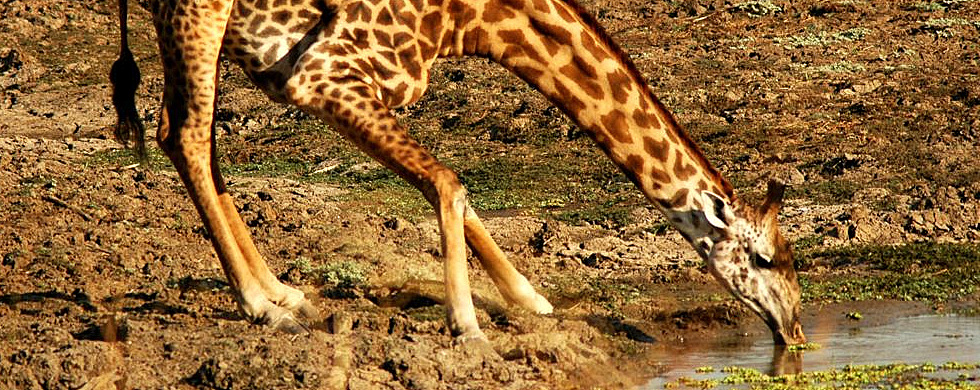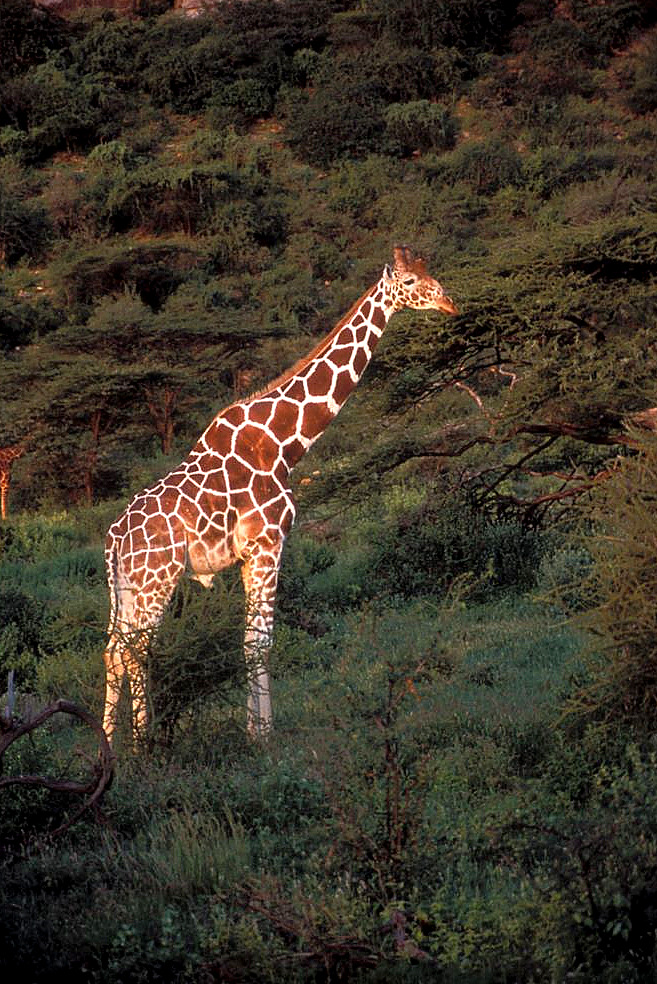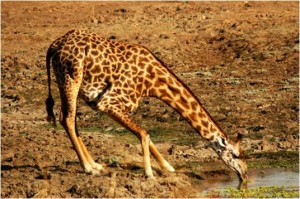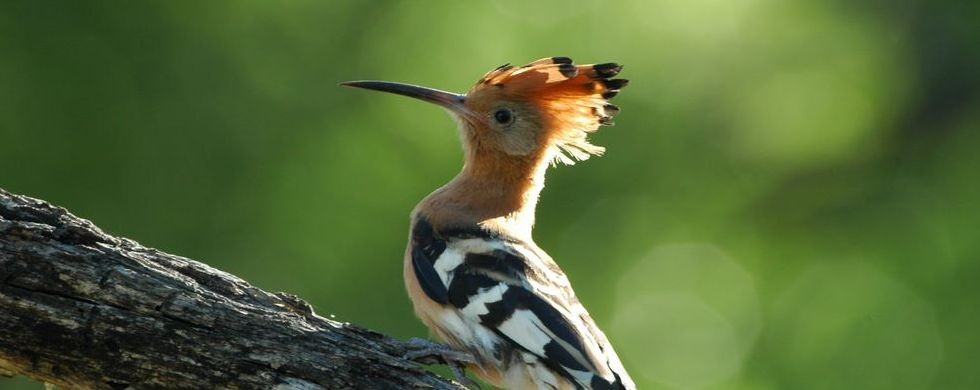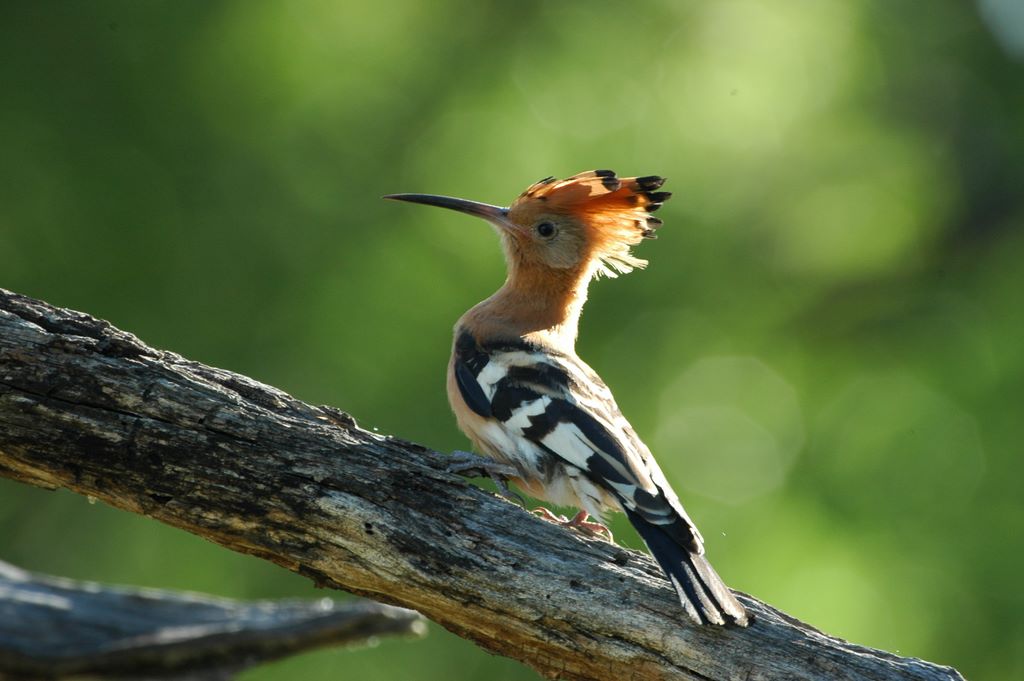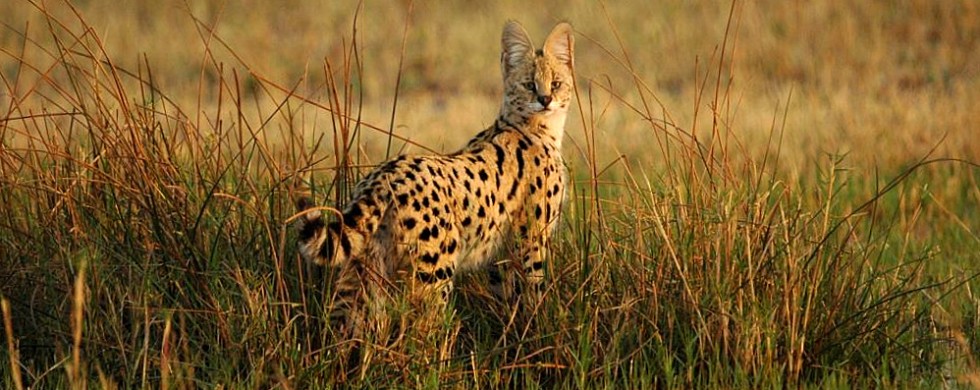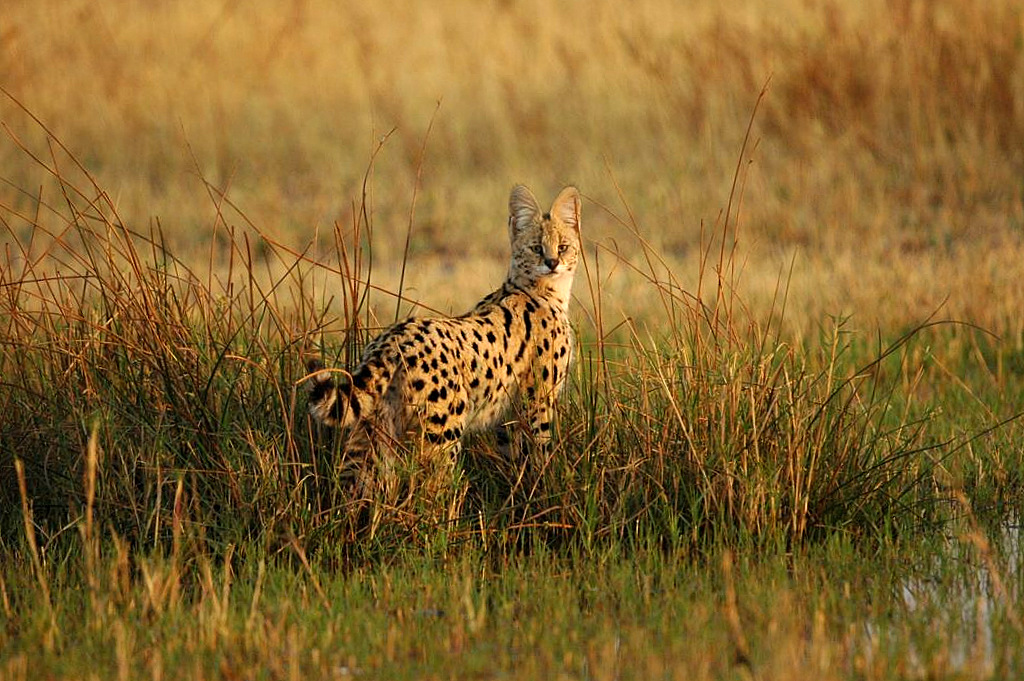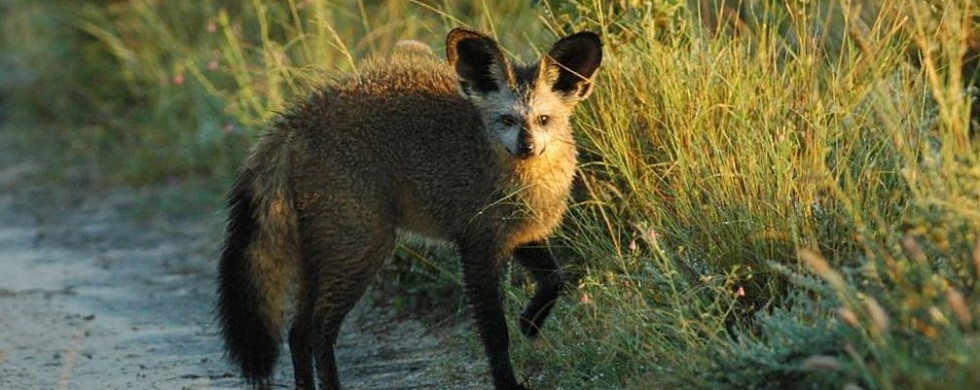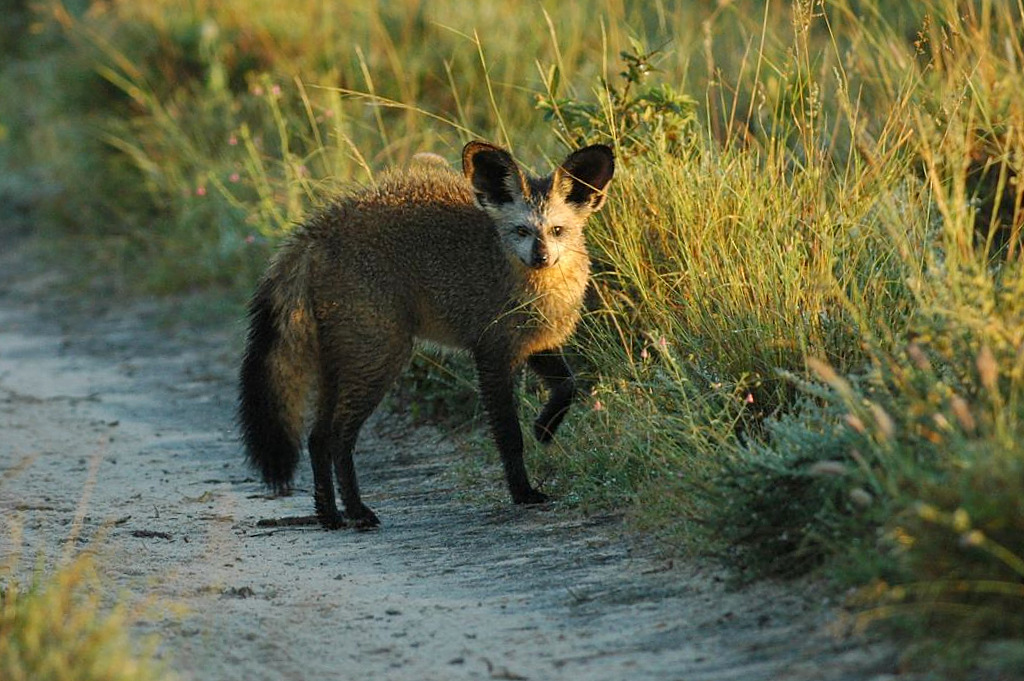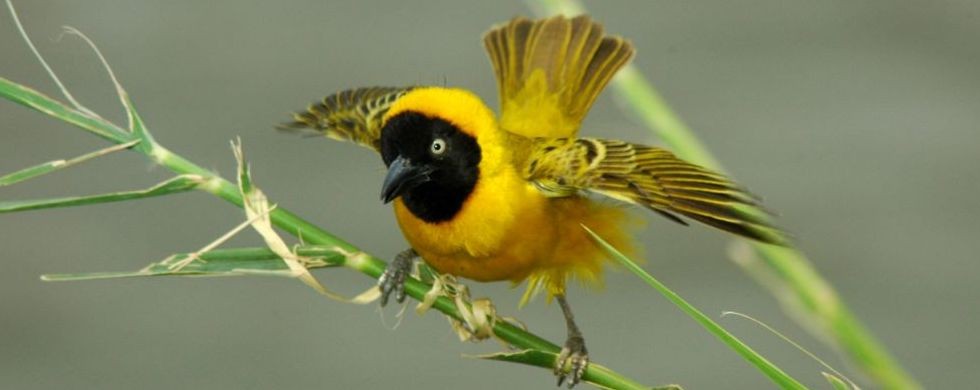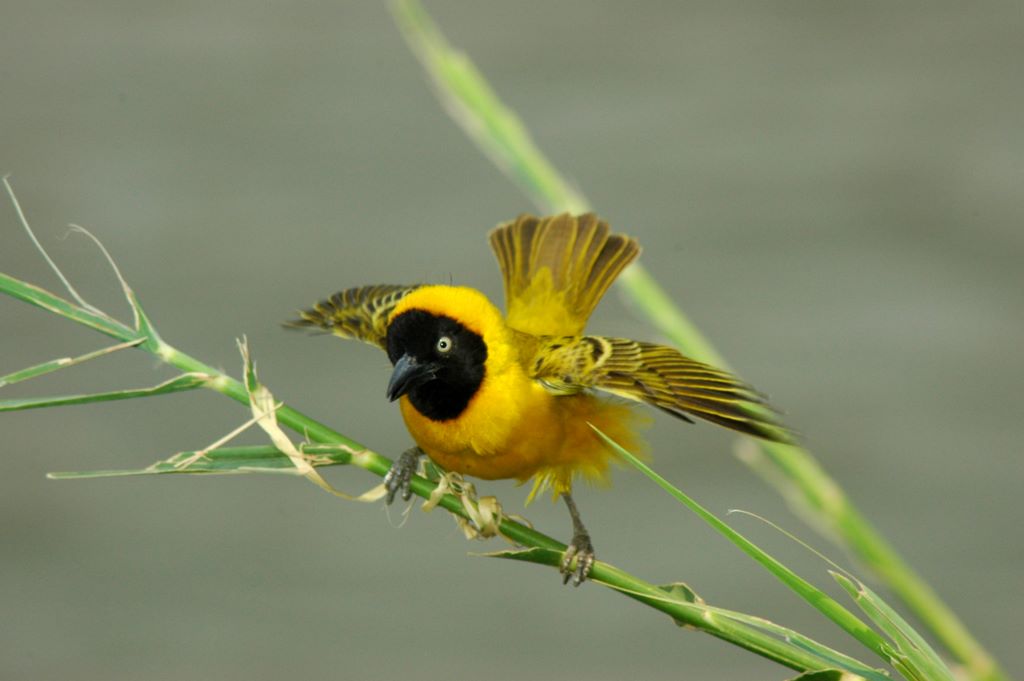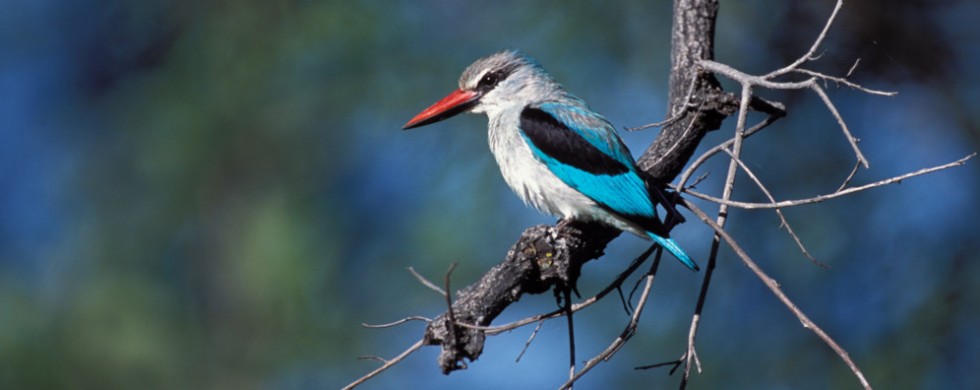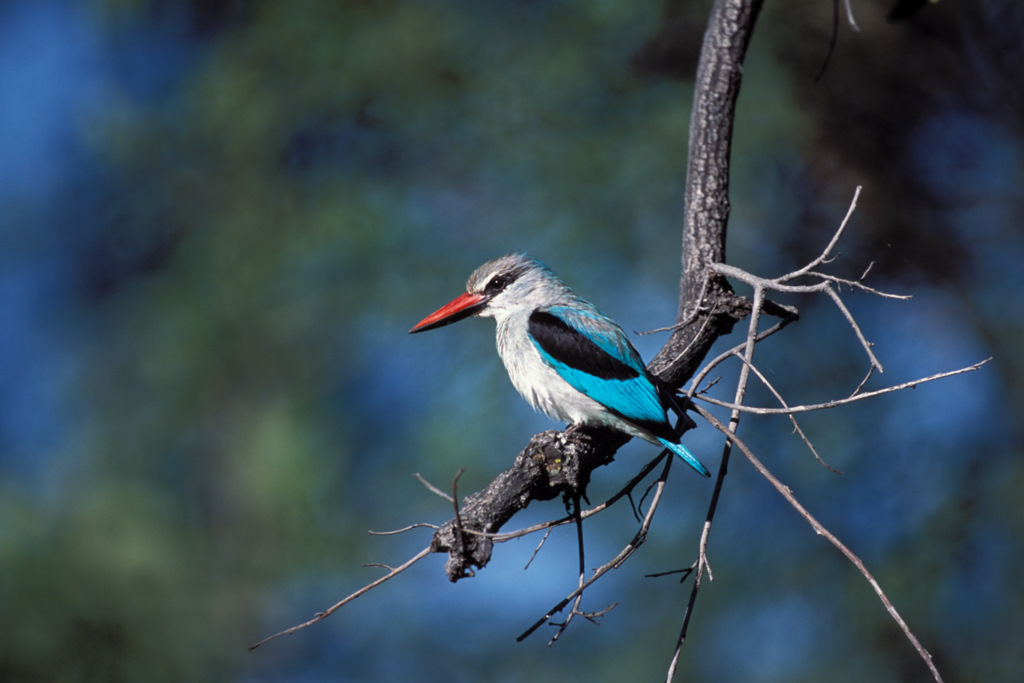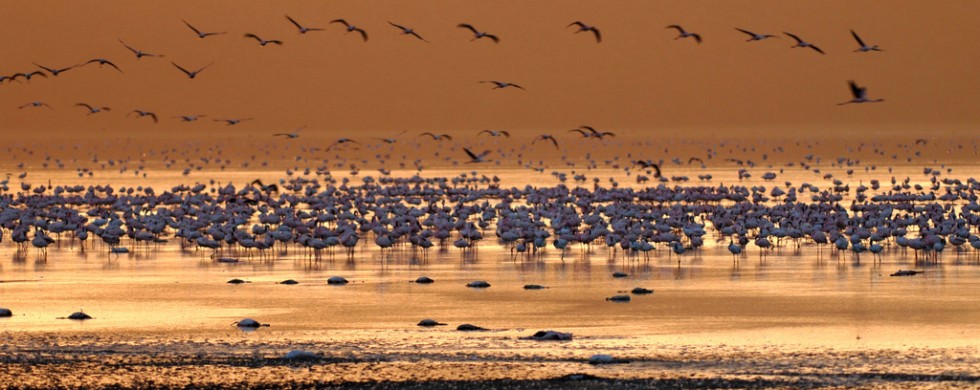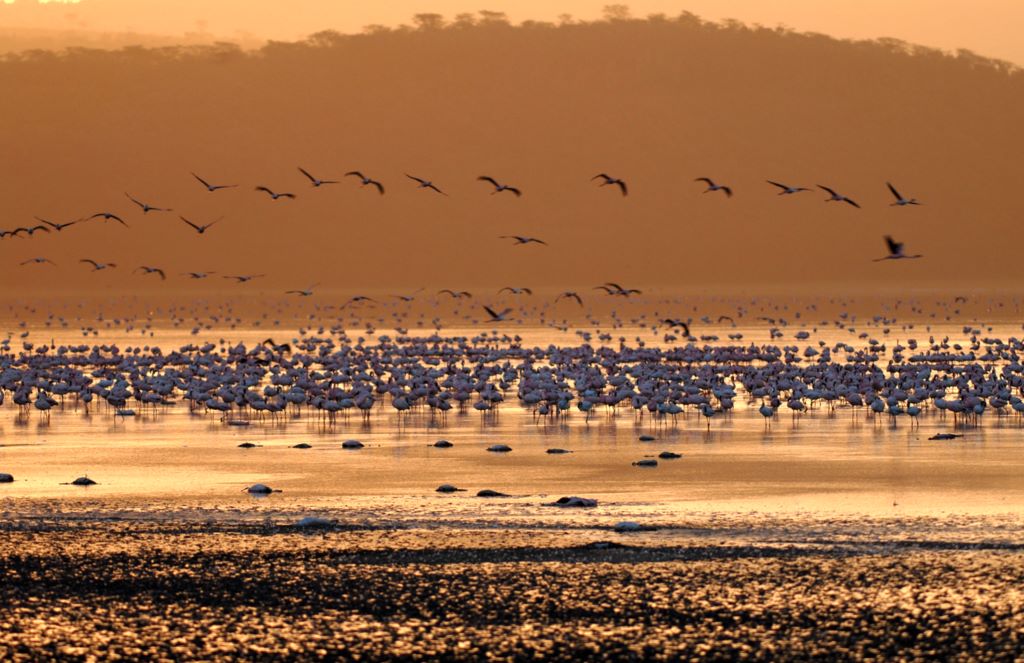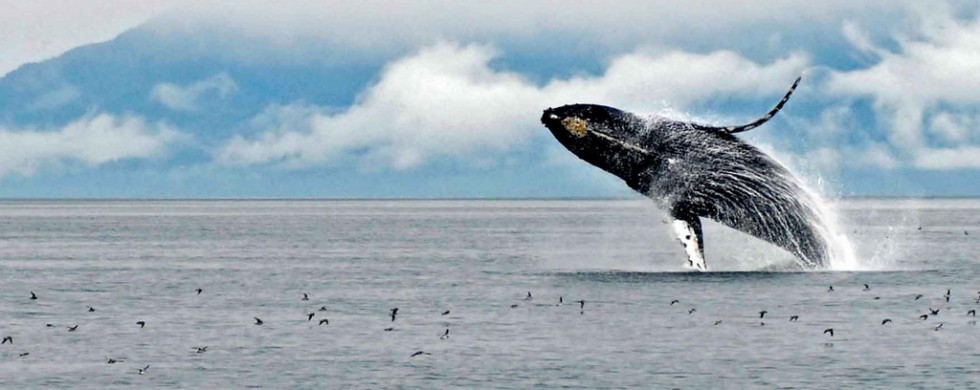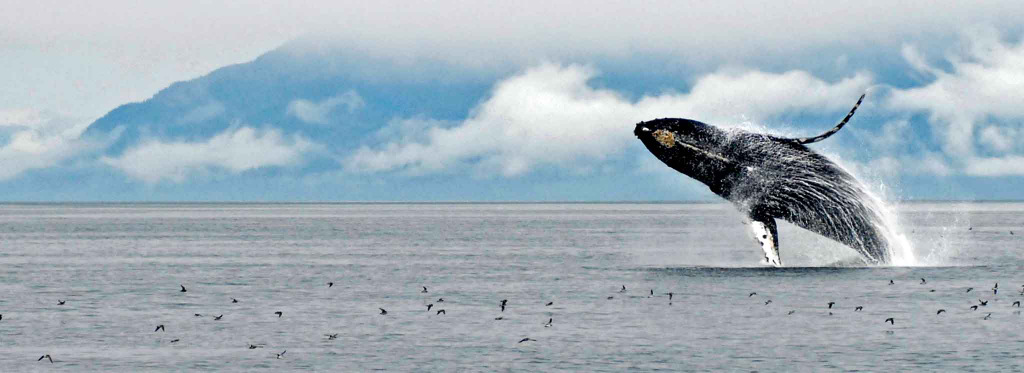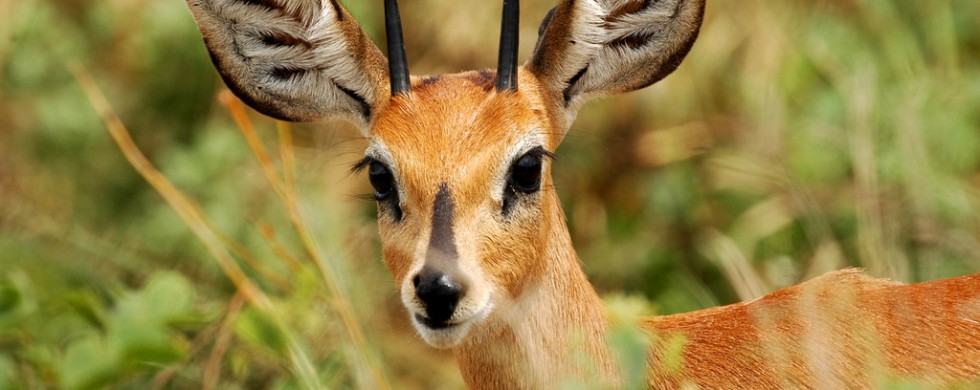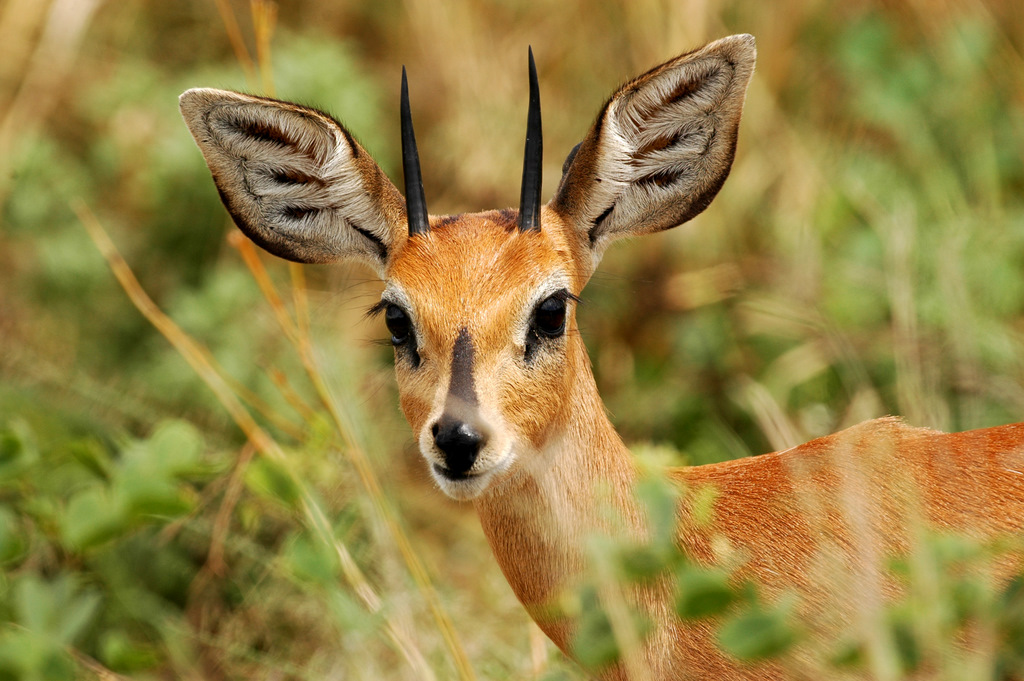15
Shot of the Month – May 2011
Many would look at the image above and say that it was a picture of a giraffe. While this statement would be generally correct, it would also be unfair, or at least unsatisfyingly vague. Many might not realize that there are in fact 9 types of giraffe in the world (all living in Africa) and each is a bit different than the others. The specimen above is a Reticulated Giraffe and is only found in northern Kenya, Somalia, and southern Ethiopia. I photographed this one in Samburu National Park in Kenya. The Reticulated Giraffe is one of the most common varieties found in zoos.
The creature having a drink below is obviously also a giraffe but his/her markings are clearly different. This is a Thornicroft Giraffe that I photographed in South Luangwa National Park in Zambia. There are only about 1,500 Thornicroft Giraffes left in the world and they all live in eastern Zambia.
“Giraffe” also includes:
Nubian Giraffe: Only about 250 remain in the wild and they are found in eastern Sudan and northeastern DR Congo.
Smoky Giraffe: About 20,000 are left in the wild and they are found in southern Angola, northern Namibia, and parts of Zambia, Botswana, and Zimbabwe.
Kordofan Giraffe: Less than 3,000 remain in the wild and they are found primarily in Chad, Central African Republic, and Cameroon.
Maasai Giraffe: These are the giraffes that most people see if they go on safari in East Africa. There are about 40,000 left in the wild and they are found in Kenya and Tanzania.
Rothschild Giraffe: Less than 700 remain in the wild though they are zoo favorites so there is a good chance you have seen one there. In the wild they live in Uganda, parts of Kenya, and in southern Sudan.
South African Giraffe: Less than 12,000 are left in the wild and they are found in South Africa, Botswana, Zimbabwe, and Mozambique.
West African Giraffe: These are the rarest giraffe in the world with a population of less than 220 left in the wild. They are found in southern Niger.
Each sub-species of giraffe has a unique size, color, pattern, and distribution. The next time you see a “giraffe” be sure to dig a bit deeper to find out which particular natural gem you have discovered.
🙂
15
Shot of the Month – April 2011
Do you have someone in your family or perhaps a friend or two in which everything about them seems bigger than life? The way they dress, the way they act, how they talk, the stories they tell, the situations they seem to find themselves in? Well, if you were a bird, your buddy the Hoopoe would be that over-the-top pal. The one shown here was photographed in Botswana.
Check out his dramatic style. His wings and back are painted with striking black and white markings. The head and neck are adorned in a beautiful hue of gold. And then there is that headdress. When excited he will snap it open with great flair and may bob his head up and down to ensure that all take notice.
And these guys really get around. They can be found in Europe, Asia, North Africa, Sub-Saharan Africa and Madagascar. Like true jet setters, those from Europe and north Asia will migrate to warmer temperatures in the tropics during the winter.
Fly in a straight line like the rest of us birds? No, too pedestrian. The hoopoe has a distinctive style – by closing his wings every few beats his undulating flight pattern bobs up and down much like how a cast-away bottle rises and falls with the ocean swells.
Birds spend their time in trees, right? Well, the hoopoe spends much of his time on the ground foraging for something to eat. He uses that long, slightly curved bill to detect and extract insects, particularly insect larvae and pupae, from the soil. Hoopoes are fond of crickets, locusts, beetles, cicadas, and so forth but will occasionally dine on small reptiles, and frogs and may partake in seeds or berries.
And then there is the fighting. Hoopoes are very territorial and the males get into brutal fights and will try and stab each other using those long bills like daggers. Some birds have been known to be blinded during such battles!
Other over-the-top behavior? Oh, there’s more. Female hoopoes raising young produce a foul-smelling liquid that they rub over themselves while in the nest. The young, mother and the entire nest smell like rotting meat. Scientists posit that this wretched liquid deters predators and may act as an antibacterial agent.
And the hoopoe chicks have a very endearing trick up their sleeves. From the age of six days, nestlings can fire streams of feces at intruders and they can hiss like snakes to try and scare off would-be attackers. (Thanks, but I’ll pass on babysitting those little darlings)
And hoopoe are such hobnobs — humans seem to be fascinated by these starlets. Egyptians considered them sacred and their likeness can be found on ancient tombs and temples. Hoopoes are mentioned in the Bible and Koran alike. In Persia hoopoes were a symbol of virtue and they were prominent in the Persian book of poems “The Conference of the Birds.” And they are the national bird of Israel. Harrump. Show-offs.
Such flair, energy, and panache. Yes, hoopoes and their ilk can be tiresome at times. But, I think we all need a few hoopoes in our lives to remind us to dare to be bold and embrace life.
Until next month. 🙂
15
Shot of the Month – March 2011
While all felines are apex predators and rest comfortably at the top of the food chain, most of our attention and admiration go toward the “Big Cats” – lion, tiger, leopard, and jaguar. These are the largest members of the feline family and they are the only ones that can roar. Some folks add the snow leopard, mountain lion, and cheetah to the Big Cat list. (For the record, none of these classifications have any scientific standing)
Then we have the 35 species of “lesser cats.” A term I would find insulting if I was among this group as each of them is quite spectacular in their own, diminutive way. The serval, as photographed here from Botswana, is one such wonder.
Servals are shy and normally out at night so they are rarely observed. We found this one just as the sun was about to rise on a crisp morning in Botswana. Given that servals only stand about 2-3 feet tall they are especially hard to see in tall grass. That is, however, unless they are hunting.
During one safari in Namibia I was slowly driving along when I heard the loud chatter of angry birds. The clatter finally broke through my consciousness and I remembered that sounds can be an important tool in finding wildlife. Why all the racket? Why were these birds so upset? I stopped the car and listened. I followed the sound to the enraged birds and watched as they hovered above the tall grass.
BOING. A serval exploded from the grass in an amazing vertical leap. He leapt up and forward—most likely trying to land on an unsuspecting mouse. BOING. Another amazing vertical leap. BOING…One of my favorite safari memories. Ever.
Servals specialize in locating and eating rodents with their exceptional hearing and sight. And with that amazing jumping ability. Servals can use this skill to leap 10 feet into the air from a sitting position to catch birds in flight! They also dine on fish, lizards, frogs, and insects.
And these cats are good at what they do. Lions are only successful about 30% of the time when they hunt. Serval hunting success rate is 50%. Take that Big Cats!
The mighty serval –the Tigger of the savannah.
Until next month… 🙂
15
Shot of the Month – February 2011
This month we will learn a bit about the adorable, but often hard-to-find bat-eared fox (BeF). I photographed the one shown here in the Kalahari Desert of Botswana.
BeFs are found in one of two distinct populations, either in South West Africa (Namibia, Botswana, certain parts of Zimbabwe, and South Africa) or in East Africa (Tanzania, Ethiopia, Sudan).
Fun February Fox Facts:
- Insectivore: BeFs eat primarily insects! They are the only member of the Canidae family (foxes, wolves, dogs, jackals, and coyotes) to give up eating mammals. BeFs are especially fond of harvester termites (but who isn’t, really?). They also dine on grasshoppers, scorpions, dung beetle larvae, millipedes, lizards, fruits, and eggs. That being said, they really prefer to eat insects.
- Good for Sailing BeFs only stand 12-15 inches tall at the shoulder while their ears can be over 5 inches tall! (Some quick math tells us that their ears represent 25-30% of their total height). Think Dumbo, but as a fox…
- Whispering Won’t Help: Bat-eared foxes hunt by walking slowly, nose close to the ground, with ears cocked forward. As they walk they listen for insects on or under the surface of the earth. How good is that hearing? Well, BeFs can locate termites from the sound they make while chewing on grass. More amazingly they can hear and then find dung beetle larvae chewing their way out of a dung ball located 12 inches underground.
- Termite Control: Reportedly, one BeF can eat over 1 million termites in a year.
- Specialized Jaws: BeF have grown extra teeth to chew up insects. Most foxes have 42 teeth, BeFs have 48. BeFs also have specialized lower jaws that allow for ultra-rapid biting to quickly stun, kill, and eat small insects.
- Dangerous World: Due to their small stature just about every predator picks on the BeF: Lions, leopards, cheetahs, hyenas, rock pythons, and wild dogs. Even large raptors will hunt BeFs.
- Night Life: To avoid the dangers mentioned above BeFs are generally nocturnal. This is not foolproof, however – lions and leopards are also nocturnal.
- On the Road: In a given night a BeF can walk over 7 miles in search of food.
- All in the Family: BeFs tend to mate for life and the males are devoted parents.
The bat-eared fox –the delightful underdog of the plains. Given their good looks, exceptional talents, and commendable behavior you can’t help but root for them.
Until next month… 🙂
15
Shot of the Month – January 2011
Is it a new year already? This weaver bird seems to share my surprise at completing another full rotation around the sun.
The amusing nature of this shot belies the unexpected danger in capturing it. I shot this image while staying at a tented camp on the banks of the Lower Zambezi River in Zambia.
All the other guests, having eaten their lunch, had retired to their tents for some rest. I took the opportunity to stalk around the campsite and see what I could photograph. Our lunch table stood on a small nook of land that jutted slightly out into the river. A simple railing separated the terrace from some reeds on the river bank. During the meal I had noticed that this weaver bird liked coming to the reeds to collect building materials, presumably for a nest under construction. I decided I would use this fellow to experiment with some flash photography techniques. I think the flash may explain some of that startled look.
After taking the shot I turned around and was stunned to find a massive elephant standing only 25 feet away. During my shoot, several elephants had walked into the campsite to feed on fallen fruit and there was a nice collection of fruit near where I happened to be standing. One of the largest elephants stood there and rocked back and forth in my direction. Not a good sign.
I looked around for help. Not a soul. All of the staff had gone off for some rest or to work in the office. Not a single guest to be found. I surveyed my other escape routes. Going forward was not possible as my little “peninsula” was blocked by a large, annoyed, hungry elephant. I glanced back toward the reeds. Below me was the river. I could either leap into the water or try a tricky jump into a small boat that was tied up not too far away. Only Indian Jones could make that leap without breaking a few bones and/or flipping the boat into a watery heap. All the same, I threw one leg over the railing to keep my options open.
I looked at the elephant. He looked at me. I glanced at the river, measuring. This seemed to go on for most of the afternoon.
Luckily, after a very long several minutes the elephant wandered off and began to forage on a different piece of land. Whew. I could now could hear my racing heart.
Perhaps the startled look on the weaver bird had less to do with me and more to do with what was standing just behind me.
Just another pretty picture… 🙂
15
Shot of the Month – December 2010
Now this is a Christmas scene that I can get excited about. I know, you snow-loving, holiday traditionalists and winter-sport zealots will cry foul at such blasphemy, but hey, it’s my site, so pipe down in the back.
This cobalt scene is from a beach in northern Zanzibar. Zanzibar is an island off the coast of East Africa and is a semi-autonomous part of Tanzania.
A few fun facts about Zanzibar
- Zanzibar is a collection of islands – two large ones (Unguja, and Pemba) and numerous smaller ones. Unguja is the one most people refer to when speaking about “Zanzibar.”
- The great weather and amazing views have attracted humans for a long time – human remains on the island date back over 20,000 years.
- The island is famous for the spices it produces: cloves, nutmeg, cinnamon, and pepper.
- Zanzibar has been a gateway to Africa for centuries and its past is replete with exotic trade, adventure, and conquests and overlords from Oman, Portugal, and England.
- The shortest war on record took place here. The mighty Brits won the Anglo-Zanzibar War here in 1896 in 38 minutes flat. Jolly good, that.
This shot is for those of you who share my pining for warmer climates during these blustery months. Perhaps this scene can act as a minor remedy for those times when your back aches from clearing yet another snowfall. Or when cabin fever weighs on you like a suffocating blanket. Or when your eyes ache for color, any color other than shades of steel grey. Stare deep into this sea of blues and drift off for a mini reprieve.
I’ll be there, waiting.
All the best to you and those close to you for this holiday season. 🙂
15
Shot of the Month – November 2010
Kingfishers are famous for their dramatic hovering and diving skills in catching, as their name implies – fish. Turns out, however, that not all kingfishers can be so easily “pigeonholed” (is that a pun?).
There are over 90 types of kingfishers and many of them live near the water and dine primarily on a diet of fish.
There are many others though that can live quite far from water and eat just about everything except fish.
The Woodland Kingfisher, shown here, is found in a variety of, typically drier, wooded habitats. It feeds primarily on insects (grasshoppers preferred, thank you) though its diet is vast and can include snakes, amphibians, arthropods, and sometimes fish if locally available. Most kingfishers hunt from a preferred perch or branch. They typically dive down, grab their prey, and return to the perch to feed. The dining routine normally includes beating the prey senseless against a branch to render it docile and soften the morsel for easier swallowing.
Regardless of the diet, all kingfishers share a common look. They have large heads, long dagger-like bills, short legs, and stubby tails. Kingfishers tend to be brilliantly colored with most having blue or green dominating their color palette.
The majority of kingfishers live in the tropics of Africa and Asia though a few can be found in temperate zones. The US has only 3 types of kingfishers (Common, Belted, and Green). South America, although tropical also only has 5 types of kingfishers. The tiny African country of Gambia, for comparison, has 8 species within its national borders.
The Woodland Kingfisher is found in Africa and lives within 8 degrees, north, and south, of the equator. Those birds living on the outer fringe migrate into the equatorial zone in the dry season. I photographed this fine-looking fellow in northern Botswana.
As you can see kingfishers are a diverse lot that can span a broad range of terrains and survive on a surprising variety of prey. So, the next time you spot a kingfisher, don’t be surprised if fish are nowhere to be found.
🙂
15
Shot of the Month – October 2010
This month a lovely scene that pretty much speaks for itself.
Photographically I didn’t have to do much to capture this one. It was a late afternoon as we drove along the edge of Lake Nakuru. We stopped to look at some critter and when I glanced back and saw this scene, in this light, I knew we had something special. I quickly threw a bean bag on the roof of the vehicle, steadied the camera on the bean bag, and fired off a few shots. As if on cue some obliging flamingos took flight and added a nice element to the photo.
Lake Nakuru, located in Kenya, East Africa is a natural wonder in that it can attract thousands, and at times millions of flamingos to feed on algae found in the alkaline waters. During these times the lake becomes a noisy, turbulent sea of shifting waves of pink.
The lake is also home to over 400 types of bird life and the areas around the park contain an amazing diversity of wildlife including lion, leopard, giraffe, waterbuck, impala, and other assorted grass eaters. The park is also a rhino sanctuary and is home to over 100 of the prehistoric-looking beasts.
I have been to many wildlife parks in Africa and few can rival the quantity and diversity of life, and the amazing range of smells, sights, and sounds of this small jewel of a park. It is one of my favorites.
It is unclear however if this ecosystem can continue to thrive. The population of flamingos has waned in recent years and many fear that the pollution from the growing, nearby town of Nakuru and the run-off of pesticides from agricultural lands is destroying the habitat.
With the human population now at seven billion, and rising, the dilemma facing Lake Nakuru is being repeated with natural habitats across the globe as the expanding human footprint pushes other life forms onto shrinking, increasingly isolated, and fragile sanctuaries.
Until next month…
15
Shot of the Month – September 2010
The sequence of events, more often than not, went something like this.
- Hear a thunderous watery clap.
- Spin on my heels in the direction of the calamity.
- F*$%#@! (curse like a sailor)
- Watch the massive hole in the water begin to fill in as the whale slips beneath the surface
My heart sank each time I heard that sound. That sharp report signaled that I had yet again missed seeing what is really a nonsensical idea – that a fifty-foot, forty-ton humpback whale could launch 2/3rds of its body out of the water like a Polaris missile before crashing back into the ocean. This leap of credibility is called a “breach” and humpback whales seem quite adept at it.
Trying to capture a breach on “film” is one of the hardest types of shooting I have done. Even though it was summer in the Inside Passage of Alaska, it could be quite cold standing on the bow of the boat. I have a low tolerance for cold. Using a tripod or monopod to steady the camera was out of the question given the motion of the boat and the speed of the action we were trying to capture. Between the shivering body and trembling hands and the rocking boat getting a crisp shot seemed to require divine intervention. When the water was fairly calm I would sometimes lean hard against the railing trying to make myself into a human camera support. Other times when the boat rocked up and down significantly I would bend or unbend my knees, much like a surfer or skateboarder, to counter the motion of the boat. In this case, I was trying to act like a human shock absorber.
And then there was the problem of knowing where to look. We never knew when a whale might breach or from what position relative to the boat. A breach might only last 2 seconds and you had almost no time to raise your camera and start firing if you wanted to capture the breach at its peak.
The few shots we did manage were due to a few gracious whales we called “serial breachers.” Whales that breached only one time were rarely photographed because the odds of looking at the right spot out of a 360-degree angle of view were slim to none. But some energetic whales would breach 2 or 3 times in fairly rapid succession. Once a breach was spotted the captain would try and turn and point the boat in the direction of the splash and we would head in that direction. We would hold our cameras near our faces and watch and hope for a serial breach. Would we be lucky?
KAPOW! The massive beast would burst through the water and it was a real struggle to remember how to use the camera. I think my jaw literally dropped open the first few times I witnessed this stunning event. During the remaining episodes, I had a huge grin on my face while pressing as hard as I could on the shutter release.
Scientists have no idea why humpback whales breach. One theory is that breaching helps remove parasites from the skin, a form of aerobatic exfoliation if you will. Some think it might have a social meaning. Others posit that whales may breach because well, because it is just a lot of fun.
If breaching is half as much fun as witnessing the feat, then that explanation makes perfect sense to me.
Until next month…:-)
15
Shot of the Month – August 2010
Ok, all together now, “awwwwwl.” Yes, he is very cute. This image is a crowd favorite, especially among mothers.
This diminutive antelope goes by a myriad of names, or at least spellings. Steinbuck. Steinbok. Steenbuck. Steenbok. You get the idea.
Steinbuck stats:
- They only reach 18-24 inches in height at the shoulder and weigh in at about 25 pounds.
- They can go long periods of time without drinking water since they get most of the moisture they need from the plants they eat.
- Steinbuck live in two distinct clusters. In East Africa, they can be found in southern Kenya and Tanzania. In Southern Africa, they can be found in Angola, Namibia, South Africa, Swaziland, Mozambique, Zambia, Zimbabwe, and Botswana, where this photo was taken.
- When in trouble, like when fleeing the attack of African Wild Cats, Caracals, Jackals, Leopards, Marital Eagles, and Pythons, Steinbuck can take refuge in old Aardvark burrows. They also use the burrows to raise their young.
- Steinbuck live alone though there is some evidence that they may live in monogamous pairs.
- Only the males have those straight, narrow horns.
So next time you are out in the bush remember to look down – a Steinbuck just might be afoot.
Until next month…:-)

